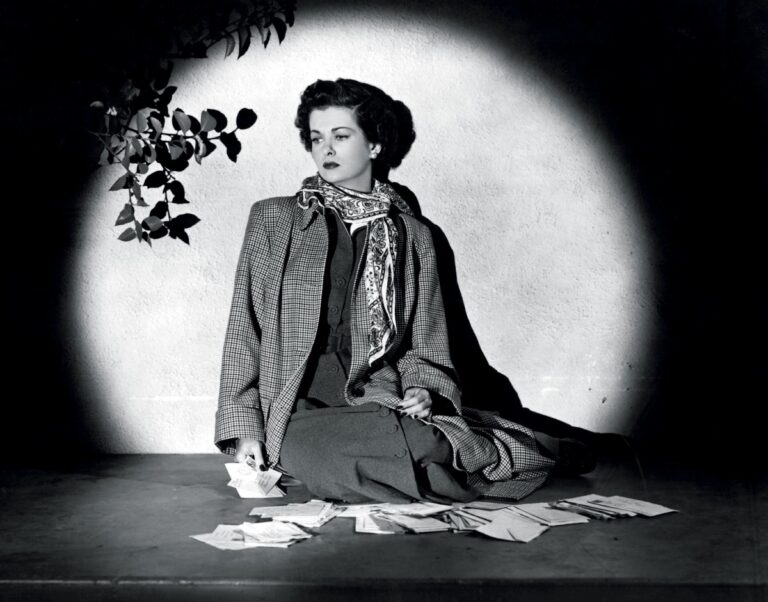Tribute to Joan Bennett
2023/3/24

The Hollywood actress Joan Bennett (1910–1990), known to noir fans mainly from the American films of Fritz Lang, came from a large acting family. Her mother Adrienne and father Richard (who also appeared in silent films), as well as her older sisters Constance and Barbara, performed on the stage. It was with her parents and sisters that Joan Bennett appeared in front of a movie camera for the first time at the age of six in The Valley of Decision (1916).
She began to make a name for herself in Hollywood in the late 1920s, and by the 1930s she was – still as a natural blonde – already widely cast. As Spencer Tracy’s acting partner, she appeared in the romance She Wanted a Millionaire (1932) and the comedy Me and My Gal (1932). Alongside another 1930s star, Katharine Hepburn, she appeared in one of the film adaptations of Louisa May Alcott’s Little Women (1933).
Bennett’s subsequent career was linked to the independent film producer Walter Wanger, who was also her husband between 1940 and 1965. She gradually began to appear in roles of glamorous, seductive femmes fatales, alongside Louis Hayward, for example in the adventure romances based on Alexander Dumas‘ The Man in the Iron Mask (1939) and The Son of Monte Cristo (1940).
Bennett first worked with Fritz Lang on the war thriller Man Hunt (1941), and a few years later on a pair of now-iconic noirs, The Woman in the Window (1944) and Scarlet Street (1945), in which she portrayed the femme fatale of an elderly man with the face of actor Edward G. Robinson. Lang’s other film in which she appeared, the gothic noir Secret Beyond the Door (1948), remains equally popular today.
Bennett’s noir filmography also includes films such as The Woman on the Beach (1947) directed by Jean Renoir, Hollow Triumph (1948) by Steve Sekely with cinematography by noir magician John Alton, and The Reckless Moment (1948) directed by another German émigré, Max Ophüls. The latter film, which will be present in this year’s program as a tribute to her, marks her shift into the roles of caring wives and mothers. She became most famous for these in a pair of comedy films directed by Vincente Minnelli, Father of the Bride (1950) and Father’s Little Dividend (1951), where she appeared again alongside Spencer Tracy.
The actress’s film career at the time was damaged by a well-publicised scandal, dragging on since December 1951, when her husband Walter Wanger shot her agent Jennings Lang out of jealousy. Hollywood studios chose not to cast her, so she began performing on the theatre stage. It was not until the mid-1950s that she returned in front of the camera, for example in Douglas Sirk’s successful melodrama There’s Always Tomorrow (1956). In 1966–1971, she appeared in the horror soap opera Dark Shadows, which aired on ABC, followed by the feature-length vampire horror film House of Dark Shadows (1970), in which she reprised her role. Her film career also ended in horror – her last acting role was as Madame Blanc in the famous giallo Suspiria (1977) by Dario Argento.
Jana Bébarová
